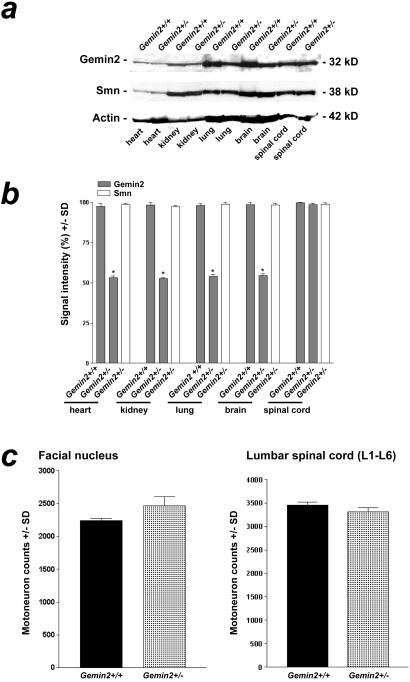Figure 2.
Quantification of Gemin2 and Smn protein levels in tissues of 7-month-old heterozygous and wild-type Gemin2 mice. (a) Gemin2 protein was detected by Western blotting using a Gemin2-specific antiserum (Top). The signal for Gemin2 was reduced in heart, lung, kidney, and brain of Gemin2+/− mice. In contrast, Gemin2 protein levels were unchanged in spinal cord of Gemin2+/− mice. Western blotting of the same extract with monoclonal anti-Smn antibody (Middle) revealed similar signal intensities in tissues of wild-type and Gemin2+/− mice. (Bottom) Reprobing of the Western blot with a monoclonal anti-actin antibody as a control for equal loading of the gel. (b) Gemin2 and Smn protein content in various tissues of 7-month-old wild-type and Gemin2+/− mice was determined by scanning and quantification of the intensity of the Gemin2 and Smn immunoreactive bands from Western blots. Gemin2+/− mice showed similar Gemin2 protein levels in spinal cord tissue. Signal intensities for Gemin2 in heart, kidney, lung, and brain of Gemin2+/− mice (gray bars) were significantly reduced of about 50% (*). Smn signal intensity in each tissue was similar in Gemin2+/− and wild-type mice (white bars). (c) Quantification of motoneurons in the facial nucleus (Left) and in the spinal cord (Right) of heterozygous deficient and wild-type Gemin2 mice. Motoneuron counts in the facial nucleus and in the spinal cord of heterozygous deficient and wild-type Gemin2 mice revealed no differences.

